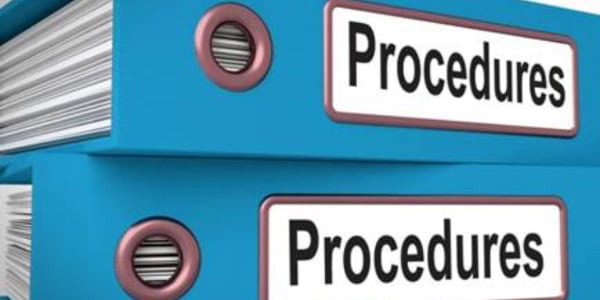
Before we get into this week’s thought, Ross and I were debating about the correct way to write the title.
Should it be “Write a Procedure” or “Make a Procedure”?
Before screen-capture tools like Loom.com or transcription services like Otter.ai or AI in general, the only way to capture a procedure was to write it, hence “Write a Procedure”.
Today though, there are many ways to capture a procedure, hence “Make a Procedure”.
So, whichever one you think is correct, use that.
To get us started, I have a question for you.
Have you ever been employed in a role and been asked to complete a task but there were no instructions for how to do it?
I thought so!
Here’s the thing. When we write procedures, we aren’t writing for ourselves, because we know how to do the work. We are writing for the people who come after us.
And if you answered “Yes” to the question above, then you know how much we appreciate the thoughtfulness of those who created procedures for us to follow.
As a general rule, if you’re going to do something more than once, make a procedure.
If you only do something once a year, make a procedure because the odds are you will forget between now and next year.
With today’s technology, it’s not hard to make a procedure.
Here’s a tip. You might even call it a procedure.
- Name the procedure. For example, How to Make a Procedure.
2. Subscribe to Otter.ai or similar transcription service and download it to your phone or desktop.
3. Press Record.
4. Verbally describe the steps and any important information.
5. Use the format – Why, What, How and What If.
a. Why is this important? (Give the person a reason to follow the procedure.)
b. What is it? (Give a bit of context or history or definition.)
c. How (List the steps and always start with a verb because people want to know what they have to DO.)
d. What if? (These are questions people may have, “What if this happens? What if that happens?” Answer the questions.)
6. Stop the recording.
7. Upload the transcription to ChatGPT or other similar AI.
8. Prompt AI to create a procedure using verbs and numbers for each step and sub-step.
9. Review and edit the procedure.
10. Copy or download the procedure.
11. Update the version history (version number and date).
12. File the procedure in your document management system.
13. Inform those who use the procedure of the new version.
14. Request acknowledgement from users that they have Read and Understood the procedure.
15. Follow the procedure.
If you’re looking for a good document management system, I recommend TKO Docs (https://tkodocs.com). It’s built on wordpress, has search availability and soon to have voice activated conversations like, “What’s our procedure for writing a procedure?”
There are many more features, like version control, being able to select who sees what, ability to create personalised manuals for different roles and the list goes on.
I trust I have encouraged you to think about your procedures and motivated you to start making them, if you haven’t already.
More information can be found in my book, The Loyal Lieutenant: How The Second-in-Command Brings The CEO’s Vision To Life.
P.S. Invite your friends to get the Weekly Thought delivered directly to their inbox.

